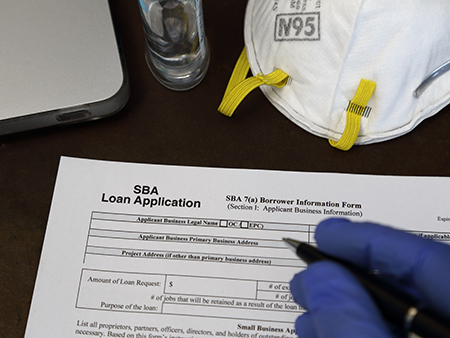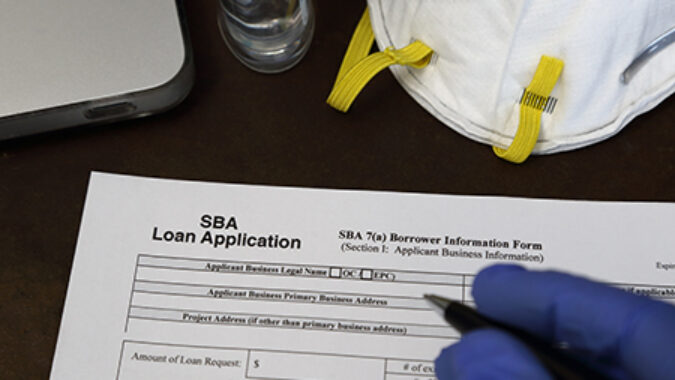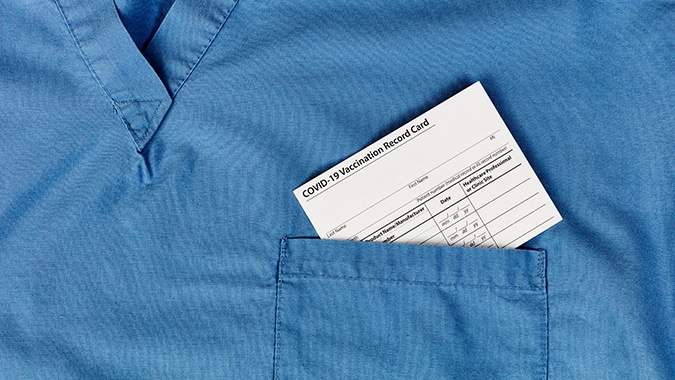 More than 1,000 employers with questions about their Paycheck Protection Program loans tuned into a recent NJBIA webcast with attorney Scott Borsack for the answers, including the latest federal guidance on the esoteric “necessity certification” that could jeopardize loan forgiveness for some businesses.
More than 1,000 employers with questions about their Paycheck Protection Program loans tuned into a recent NJBIA webcast with attorney Scott Borsack for the answers, including the latest federal guidance on the esoteric “necessity certification” that could jeopardize loan forgiveness for some businesses.
The $670 billion in business loans available under the federally backed program are intended to help businesses, the self-employed, sole proprietors, and certain nonprofits continue paying their workers during the economic downturn caused by COVID-19. PPP loans are potentially forgivable if borrowers maintain employee headcounts and payrolls at pre-pandemic levels, and use their loans for permitted expenses. A series of recent rule changes, however, have confused many business owners.
On their PPP loan applications, borrowers signed a “certification of necessity,” which became an outsized issue later, after the money was distributed, when the U.S. Small Business Administration announced that public and private companies must return their PPP loans if these hadn’t been an economic necessity. SBA’s interpretation of what constitutes an economic necessity was left unclear.
Borsack, a partner at Szaferman Lakind in Lawrenceville, said Thursday new SBA guidance issued this week still lacks clarity on the economic necessity question, but the good news is that it doesn’t matter for PPP borrowers with loans under $2 million.
“For loans under $2 million, the SBA is going to assume, without asking, that the necessity certification has been satisfied,” Borsack said during the webcast.
Loans over $2 million will be audited, however, for compliance with the necessity certification. If SBA determines a loan wasn’t necessary in the first place, the borrower forfeits the chance to have the loan forgiven. However, the SBA said any loan deemed unnecessary will not be referred to another agency for further review or prosecution as long as the loan is repaid.
“They don’t provide us with any guidance on how you determine whether the loan was necessary, but if you’re under $2 million they’re not even going to ask,” Borsack said. “Over $2 million there’s a little bit of a risk, but the risk is that there’s no loan forgiveness, not criminal prosecution.”
The interactive Q&A-format of the educational webcast allowed Borsack to cover a wide range PPP issues posed by listeners. A sampling of some of the questions and answers, edited for clarity and space, appear below. To hear the entire webcast, go here.
Q: How many tests are there to determine whether a PPP loan will be forgiven?
A: There are three tests for loan forgiveness:
-
- 75% of loan must be spent on payroll (salaries and benefits) up to $100,000 per employee, and no more than 25% of the loan can be used for other permitted business expenses, such as rent, during the eight-week period that follows the receipt of the loan.
- You must employ at least as many equivalent full-time employees as you did before the loan originated.
- During that eight-week period, employees must be paid at least 75% of what they earned before.
Q: What can I do if I borrowed too much PPP money?
A: Loan forgiveness is based on spending, not the total amount of the loan, as long as you spend the money properly. There is no penalty for returning money to your lender if you cannot spend it all by the June 30, 2020 deadline set by the program.
Q: I’ve received a PPP loan, but my business is closed and may not reopen by June 30. What can I do?
A: If your business is closed, you can use the loan to put your employees on paid leave (provided they are not also collecting unemployment) and the loan will be forgiven provided you have used at least 75% for payroll, have met salary requirements, and maintained employee headcounts.
Q: I laid off my employees, who are now collecting more under enhanced unemployment benefits than they were earning while they were working. What do I do if they won’t come back to work?
A: Any employee called back to work who fails to report has abandoned his job and is no longer eligible for unemployment benefits. The SBA has also issued guidance as it pertains to loan forgiveness, saying that if an employer sends a worker a letter informing him that he is rehired at the same salary, and the employee ignores that request to return, then the loss of that employee under this circumstance cannot be counted against the employer in terms of maintaining employee headcounts under the PPP program.
Q: If a business is paying employees for hours they worked at the end of June, but the check isn’t cut until July, does that payroll expense count toward loan forgiveness?
A: The federal law talks about expenses incurred AND paid within the covered period. So what I’ve advised borrowers is that, until we receive further guidance from SBA, to assume that they are going to have to run a special payroll on the last day of the coverage period, June 30. They will have to pay all employees what they are entitled to as of that day, and then run another payroll on their regular payroll day. Is that a pain? Yes. In a logical world the SBA and your bank would take notice of the routine processing periods and adjust the first payroll against the last payroll, but nothing about this program has been logical so far. So until we hear otherwise, I’m advising clients to run a special payroll.


Thank you
Can the Partners of a LLC be considered a FTE of the business?
Hi,
I’ve been told that as long as I am back to pre-covid FTE numbers by 6/30/20 then I will be eligible for forgiveness. I’ve also been told that I have to be at pre-covid numbers for the entire 8 weeks after I get the loan. These are two entirely different things and I’m struggling to get clarification. Please advise.
Thanks!
where do I find answer to this question?
I still don’t understand how the answer to the question regarding what happens if you cannot open by June 30th makes sense. I will have already spent the money on 8 weeks worth of payroll and expenses. Can my employees that I’ve been paying go ONTO unemployment? Will there be a 2nd round of PPP? So far we only have an 8-week answer and in my industry, we may have more than a 8-week problem.
I’m still a bit confused. If I am not able to reopen , however my staff is willing and able to hold extended hours to accommodate the patients we could see during a 3/8 week period and I pay them same amounts or 75% during the 5/8 Weeks as if it had been 8 weeks ….. will the entire payroll paid be forgiven
Can we phase bringing people back? Our office staff might have work to do put people on the road or dealing with clients closed (gyms, retail) will have nothing to do. I read you could give a bonus or incentive to pay more but if I bring one less back and spead the pay to others will that not qualify as im not meeting the FTE number?